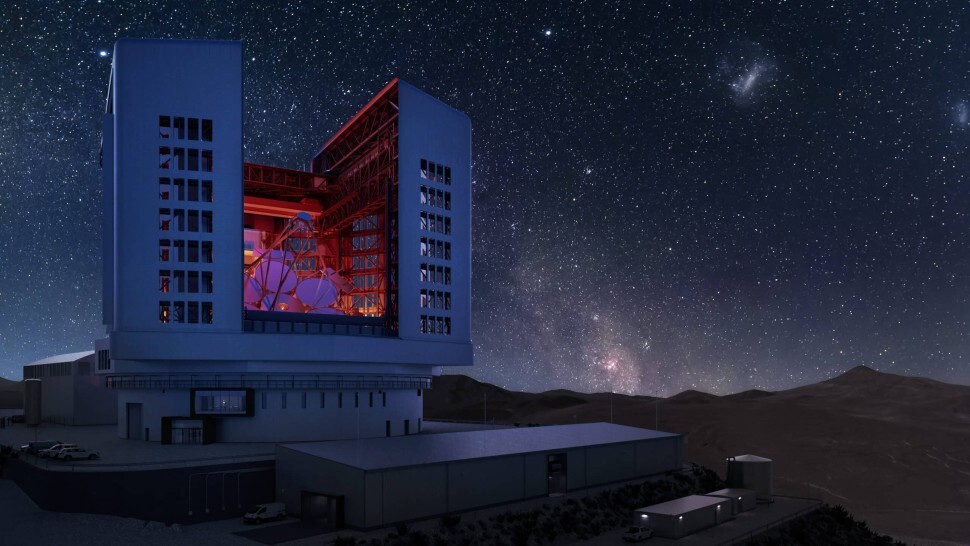16.12.2024
Northwestern joins Giant Magellan Telescope’s international consortium

Northwestern University officially is a founding partner of the Giant Magellan Telescope (GMT), an enormous ground-based telescope currently under construction in Chile’s Atacama Desert.
Launching in the 2030s, GMT will be the world’s most powerful optical telescope. By producing images 10 times clearer than the Hubble Space Telescope, GMT will explore the distant universe, including the search for signs of life outside Earth’s solar system.
As a partner, Northwestern will contribute its expertise in astrophysics, artificial intelligence (AI) and engineering. Specifically, Northwestern researchers will develop and apply AI tools to enhance GMT’s abilities to search for Earth-like planets across the Milky Way, probe the universe’s most energetic explosions and explore the relationship between galaxies and black holes.
Northwestern already leads the world-renowned Center for Interdisciplinary Exploration and Research in Astrophysics (CIERA) and the newly established National Science Foundation (NSF)-Simons Foundation AI Institute for the Sky (SkAI, pronounced “sky”). The new GMT partnership will further expand opportunities for faculty and students across Northwestern.
“Northwestern's commitment to interdisciplinary research — particularly in astrophysics, AI, data science and engineering — positions us to lead the next wave of astronomical research,” Northwestern President Michael H. Schill said. “Our full partnership with the Giant Magellan Telescope Consortium is a testament to this vision. I am especially grateful for Vicky Kalogera’s leadership and efforts to secure this partnership. This collaboration will provide unparalleled opportunities for our students and faculty to push the boundaries of research and innovation as we seek to understand the universe.”
“I am thrilled Northwestern has reached a full partnership agreement with the Giant Magellan Telescope, which will be at the top of our field through the end of the century,” Kalogera said. “The telescope is poised to change our understanding of the universe and our place within it, offering tremendous opportunities to our students and faculty. We are excited to be a part of this historic effort.”
Kalogera is the Daniel I. Linzer Distinguished Professor of Physics and Astronomy at Northwestern’s Weinberg College of Arts and Sciences. She also is director of CIERA and the SkAI Institute.
Offering unprecedented power for astronomical discovery, GMT will deliver up to 200 times the resolution and sensitivity of today’s leading telescopes. Unique among the new class of “extremely large telescopes,” it will feature the widest field of view with adaptive optics to correct for blur caused by Earth’s atmosphere. GMT also will be the only scientific instrument capable of detecting and analyzing Earth-like planets in the reflected light of their host stars. This revolutionary capability moves the field beyond traditional transit detection methods to enable much more accurate observations — and bring hundreds of planets into view for the first time.
The international consortium comprises 15 distinguished institutions, including Harvard University, Carnegie Science, University of Chicago, Smithsonian Institution, University of Arizona, Arizona State University, University of Texas, Texas A&M University, the Weizman Institute for Science in Israel and Australian National University.
“Joining the Giant Magellan Telescope consortium is an incredible opportunity for Northwestern — one that will have a ripple effect across our entire campus,” said Eric Perreault, Northwestern’s vice president for research. “This partnership brings us to the forefront of groundbreaking astrophysics discoveries while tapping into our strengths as an interdisciplinary leader in areas like artificial intelligence, data science, astronomy and engineering. The collaboration will advance our understanding of the universe while producing significant economic benefits throughout our region.”
The State of Illinois already is experiencing those economic benefits. Construction recently began at the Ingersoll Machine Tools facility in Rockford for the telescope’s 12-story-tall precision mount. Constructing this mount, which is the largest telescope mount ever built, requires a large workforce of skilled engineers, designers and manufacturing professionals. Over the next six years, workers will assemble the mount using steel sourced from the United States. It then will be shipped to Chile and reassembled.
“Northwestern’s strengths in AI, astrophysics and engineering innovation make it an invaluable addition to our consortium, and we are delighted to welcome them,” said Walter Massey, GMT’s board chair and former director of NSF. “Their involvement further establishes the Giant Magellan Telescope as the telescope of choice for America’s top universities, now spanning across Arizona, Texas, Illinois, California, Massachusetts and Washington, D.C. This collaboration reflects a nationwide commitment to advancing astronomy and cementing U.S. leadership in manufacturing and scientific discovery.”
Quelle: Northwestern University
